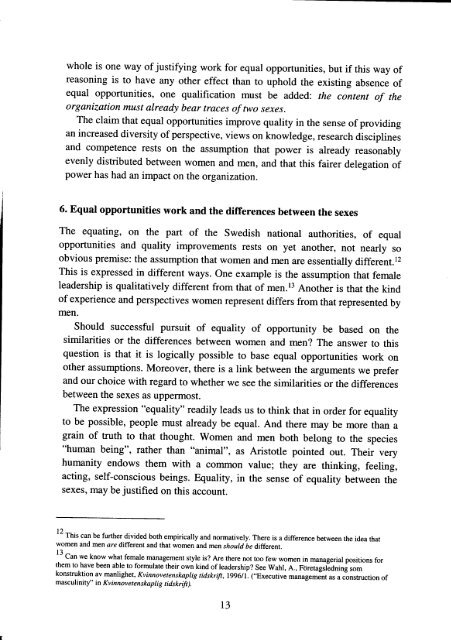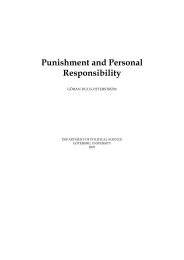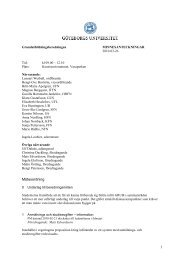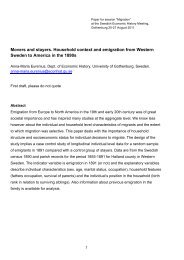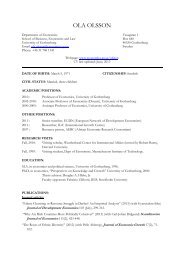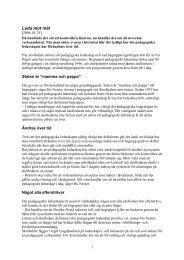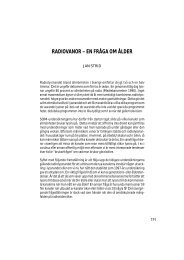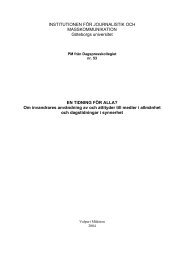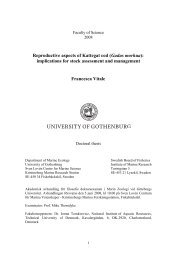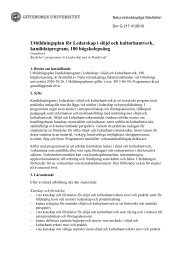Equal Opportunities Work - Theories about Practice
Equal Opportunities Work - Theories about Practice
Equal Opportunities Work - Theories about Practice
Create successful ePaper yourself
Turn your PDF publications into a flip-book with our unique Google optimized e-Paper software.
whole is one way of justifying work for equal opportunities, but if this way of<br />
reasoning is to have any other effect than to uphold the existing absence of<br />
equal opportunities, one qualification must be added: the content of the<br />
organization must already bear traces of two sexes.<br />
The claim that equal opportunities improve quality in the sense of providing<br />
an increased diversity of perspective, views on knowledge, research disciplines<br />
and competence rests on the assumption that power is already reasonably<br />
evenly distributed between women and men, and that this fairer delegation of<br />
power has had an impact on the organization.<br />
6. <strong>Equal</strong> opportunities work and the differences between the sexes<br />
The equating, on the part of the Swedish national authorities, of equal<br />
opportunities and quality improvements rests on yet another, not nearly so<br />
obvious premise: the assumption that women and men are essentially different.l2<br />
This is expressed in different ways. One example is the assumption that female<br />
leadership is qualitatively different from that of men.r3 Another is that the kind<br />
of experience and perspectives women represent differs from that represented by<br />
men.<br />
Should successful pursuit of equality of opportunity be based on the<br />
similarities or the differences between women and men? The answer to this<br />
question is that it is logically possible to base equal opportunities work on<br />
other assumptions. Moreover, there is a link between the arguments we prefer<br />
and our choice with regard to whether we see the similarities or the differences<br />
between the sexes as uppermost.<br />
The expression "equality" readily leads us to think that in order for equality<br />
to be possible, people must already be equal. And there may be more than a<br />
grain of truth to that thought. Women and men both belong to the species<br />
"human being", rather than<br />
"animal", &S Aristotle pointed out. Their very<br />
humanity endows them with a common value; they are thinking, feeling,<br />
acting, self-conscious beings. <strong>Equal</strong>ity, in the sense of equality between the<br />
sexes, may be justified on this account.<br />
12 thi, can be further divided both empirically and normatively. There is a difference berween the idea that<br />
women and men are different and that women and men should be different.<br />
l3 Cun *" know what female management style is? Are there not too few women in managerial positions for<br />
them to have been able to formulate their own kind of leadership? See Wahl, A., Ftiretagsi-edning som<br />
konstruktion av manlighet, Kvinnovetensl


